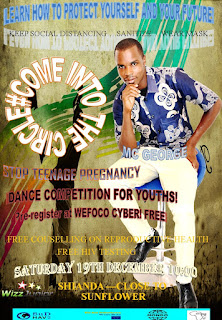Good times will conquer the bad times!
NGO Mondo has been doing capacity building and income generating activities in rural town Shianda, in Kenya since 2010. Their partner, Western Focus Community Organization (WEFOCO), has been registered since 2009, since Janika Tamm from Mondo was one of the mentor for Esther Mumia, to start WEFOCO. And they’ve been colleagues since.
WEFOCO is an umbrella organization for the community groups around Shianda, who are mainly doing agriculture activities or having livestock or selling firewood or building bricks etc. These groups have been receiving trainings from the EU AID volunteer program since 2018. 15 volunteers have been doing trainings from poultry keeping to marketing, from nutrition and health to gender inequality. This time one of my assignment was to evaluate how the groups feel about our trainings and what they have learned and what they would like to learn in the future. For this I conducted one-on-one interviews with the chairladies and the chairmen and also focus group interviews with the groups. We came to realize that there has been changes in mindsets for the women to be more aware of their rights. They are more open to talk about issues and they will turn for help to the authorities. Families describe they like how they understand their children better and they spend more time talking and explaining things to them. Another positive influence is that groups are all wanting to continue to learn, to repeat the trainings and to spread the knowledge with their communities.
Due to the struggles which were caused by COVID-19 pandemic, Shianda was facing many difficulties. One of the immediate impact was a lack of access to HIV treatments (medicine being out of stock) and rise in teenage pregnancies, meaning youths having unprotected sex. Another issue that caused insecurities among the communities was the rise in market prices, which went up straight away when the crisis started and haven’t gone down yet. This was affecting our groups who depend on the market, either by being the customer or selling the products. The ones that sell say that they are not making any profit anymore.
Despite all the struggles our groups remain hopeful and positive for changes to come. With the micro finance program we could give the groups a poultry project which will keep them stable for some time.
One thing that was said by one of the chairladies is “other organizations we have seen come and go, but WEFOCO has stayed and for this we are proud”. They feel that they are part of the community, that they should continue to make an effort to learn and educate others and that even when Mondo is not around, they will keep going! Shianda and its people are welcoming anyone and everyone and will stay in your heart for a long time and for this I want to thank Mondo and WEFOCO!













